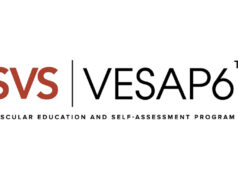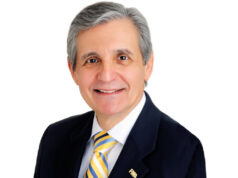
In the past 18 months, a joint taskforce studying the needs of pediatric vascular patients has made great strides, conducting a needs assessment, identifying top priorities and planning resources for surgeons of these young patients. The next step: a meeting this month for interested members from both the Society for Vascular Surgery (SVS) and the American Pediatric Surgical Association (APSA). SVS members Dawn Coleman, MD, and John White, MD, co-lead for the SVS; Regan Williams, MD, and David Rothstein, MD, co-lead for APSA.
The meeting titled the Pediatric Vascular Surgery Development Group was held on Thursday June 15, 2023 at the Gaylord National Resort and Convention Center, with interested SVS members attending live during the SVS Vascular Annual Meeting (VAM) and APSA members attending virtually. All four co-leaders anticipate the group will hereafter begin to meet quarterly.
It’s the first-of-its-kind get-together at an annual meeting to gather both vascular and pediatric surgeons. Since its formation in late 2021, the task force has conducted a thorough needs assessment and prioritized four pillars of critical care: blunt and penetrating vascular trauma, iatrogenic trauma, hemodialysis access and ECMO (extracorporeal membrane oxygenation) life support.
Trauma isn’t the No. 1 issue in pediatric vascular patients, but it is one of the most common and, importantly, it’s often a time-sensitive challenge, according to Coleman. “Delays in care can compromise the long-term and functional outcomes of children, in addition to immediate life and limb threat,” she said. “Thus, it’s a high-impact focus for our team.”
Many more invasive procedures on the heart and kidneys occur now than 10 and 20 years ago, said White. “Patients will have complications from these procedures, and we need to be prepared to address them.” ECMO has been used more frequently with children recently, especially during COVID-19, but also for the wide variety of respiratory disorders children acquire. “Its usefulness in children has been proven and it requires vascular cannulation. So we, again, need to explore best techniques,” White added.
Williams and Rothstein said the task force grew out of several themes. For one, general surgery residents (and consequently graduating pediatric surgery fellows) have progressively less and less exposure to vascular surgery, particularly open surgery. As a result, practicing pediatric surgeons, especially early-career ones, have little experience in vascular surgery operations. Additionally, vascular surgery diseases are rare in pediatric surgery but opportunities for collaboration with vascular surgeons abound. “The best care for our pediatric patients is often provided in a collaborative fashion and we can improve this collaboration by defining areas of common ground, breaking down administrative barriers and measuring our outcomes,” they said.
In the works are supplements from each organization’s journals that will include a set of descriptive disease-specific articles and access to a physician toolkit. Task force members want to accelerate developing best practices for these critical domains already identified and eventually expand into other areas and engage stakeholders from other disciplines.












